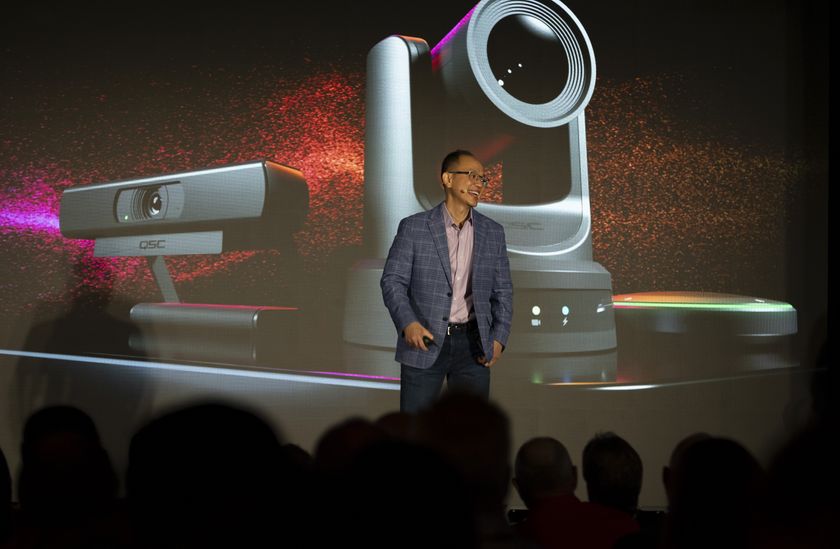Quick Bio

Name: Matthew Pulsipher
Position: Director of Product Management
Company: DVIGear
Overtime: When he’s not practicing his guitar skills, Pulsipher enjoys playing with new technologies and managing his home server lab.
SCN: What is your position, and what does it entail? What are your responsibilities?
MATTHEW PULSIPHER: As director of product management, I am directly responsible for the development and production of all DVIGear products, including the planning and design of both hardware and software functionality. I also work directly with clients to ensure that our products meet our customers’ requirements.
SCN: How long have you been in this position?
MP: I’ve been with DVIGear for over two years.
SCN: How has your background prepared you for your role?
MP: My background is primarily in IT, which has provided a deep understanding about how AV products can coexist and integrate with the IT industry. This insight has been invaluable to me as we continue to see convergence between these verticals within many companies. My background has also helped immensely in establishing DVIGear as an innovator in software development.
SCN: What are your short- and long-term goals?
MP: In the short term, I am working on the next generation of DisplayNet products, as well as a new line of long-distance fiber optic extenders. Long term, my goal is to establish DisplayNet as the number-one choice in AV distribution systems, displacing both traditional matrix switchers and other AV-over-IP systems.
[The Integration Guide to AVoIP]
SCN: What is the greatest challenge you face?
MP: Generally speaking, I think the biggest challenge we have faced is educating dealers and integrators about SDVoE. In the minds of most AV technologists, AV-over-IP systems are synonymous with compromised performance because the amount of compression used. A typical 1 GbE AV-over-IP system has a compression ratio of over 12 to 1, which impacts both image quality and signal latency. Unlike other standards and platforms, SDVoE can match the performance of a dedicated matrix switcher while retaining the flexibility and features of an AV-over-IP system.
Since developing DisplayNet, our greatest challenge has been educating people about its features and capabilities since it defies their preconceived notions and expectations about AVoIP systems. Once we can get a system in front of people, we are generally successful, but people first need to be willing to accept it.
SCN: Where do you see the pro AV market heading?
MP: In the past two years, we have seen a dramatic increase in acceptance for DisplayNet. We think the AV industry will move increasingly to IP-based video distribution, with SDVoE becoming the gold standard. The technology offers too many benefits to ignore. Prices will continue to drop as time goes on until even low-end AV-over-IP systems are challenged by SDVoE. This trend will be driven by a combination of innovation in the IT space and the prevalence of new ASIC chipsets for SDVoE.
SCN: Are there new initiatives we are likely to see from DVIGear?
MP: We are currently working on the next generation of DisplayNet hardware. Our goal is to produce a comprehensive line of products that run cooler, use less power, and cost less, while still maintaining the feature set and performance of our existing product line. This new product line will be fully interoperable with existing systems, allowing for the straightforward expansion of existing applications while users reap the benefits of the new hardware.
We also plan to increase our investment in software development. We have limitless potential for innovation within our DisplayNet software, and our innovations will benefit new customers just as much as existing ones. There are many new features coming within the next year that I am very excited about.
SCN: How can systems contractors better position themselves to profit from products and/or services you have to offer?
MP: The key is to learn the platform well enough to be able to sell it on its unique features. DisplayNet has won every objective head-to-head comparison we have ever competed in. There are two reasons for this: One, because DisplayNet is built on SDVoE technology, which is superior to all other AVoIP standards and protocols on the market. And two, because DisplayNet is the best implementation of SDVoE.
We have worked very hard on building out our software platform to be both incredibly flexible and imminently approachable. We allow a level of system customizability that enables the use of DisplayNet in very unique applications. For example, our MultiView functionality can work with any display resolution, and it can support windows of any resolution or size, as long as it’s supported by HDMI 2.0. Our most successful contractors have used this flexibility to add bespoke functionality to applications, giving their end users a unique experience.
One of the biggest issues we see with AVoIP systems in general is the complexity of system configuration and programming. Many systems currently on the market place an undue burden on system programmers and technicians. One of our foremost goals in everything we do with our platform is to simplify this process as much as possible, making other systems obsolete by comparison. Even if your end users will never see or use DisplayNet Manager, your technicians and system programmers will use it frequently. Time is money, and a system that’s easy to configure and program will cost both you and your customers less to implement and maintain. Features like automatic device replacement can replace an in-person service call with a 15-minute Zoom meeting.
Finally, we offer a wide selection of hardware that can help you build a customized system that meets your clients’ requirements at the lowest competitive cost. The DN-150 Series is instrumental in reducing a system’s total cost of ownership, with the DN-150-TX-Quad delivering the lowest-cost-per-port SDVoE solution in the industry. By leveraging the different models in our product line, you can place bids that your competitors would never be able to match, all while delivering superior performance.
Click here to read more stories from the April 2021 issue of SCN.













